Excerpts from Jim Conrad's
Naturalist Newsletter
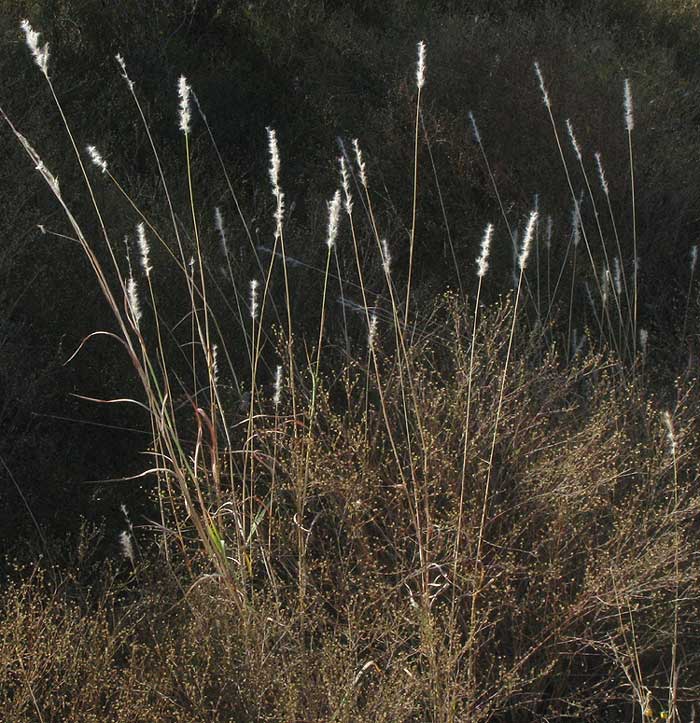
from the December 2, 2012 Newsletter issued from the valley of the Dry Frio River in northern Uvalde County, southwestern Texas, on the southern border of the Edwards Plateau; elevation ~1750m (~5750 ft); N29.62°, W99.86°; USA
SILVER BEARDGRASS
A grass calling attention to itself these days with its fuzzy, light-gathering, white fruiting heads atop tall, slender, stiff stems is the hip-high one shown above. At first glance it looks like foxtail grass, but up close you see that instead of the flower head being compact and spike-like, as in the foxtails, it's a narrow panicle with branches, as shown below:
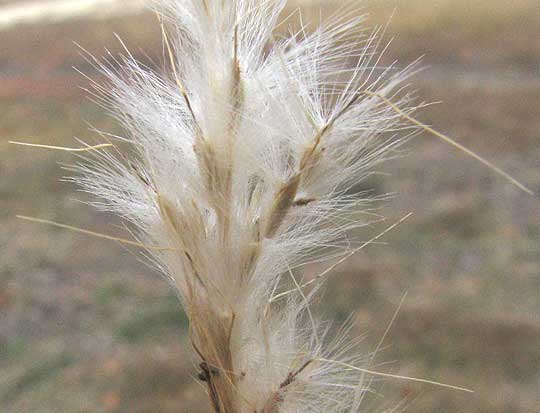
A fuzz-parachuted "fruit" with its long, bent spine, or awn, is shown below:
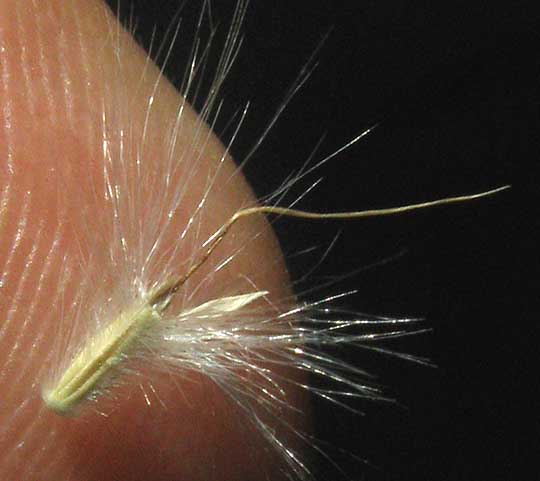
In that picture notice the pale, slender, scoop-like item arising near the top of the caryopsis-type fruit in the lower, left corner. The scoop-like item is a sterile flower on its own stem. The ridged caryopsis in the picture's lower, left corner is disseminated on the wind attached to the sterile flower. Probably the sterile flower helps catch the wind.
Other good field marks for the species are shown below:
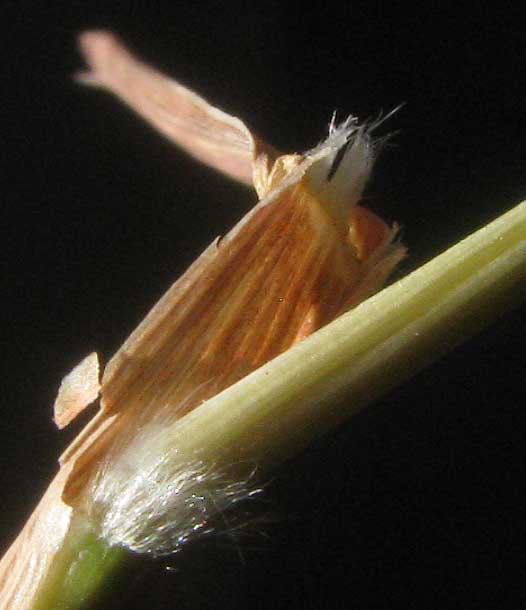
There at the top you see the ligule arising where the blade meets the stem. The brown item directed toward the picture's top, left is the dried-up blade, and below the ligule is the blade sheath that envelops the stem when it's not pulled away, as has been done here. Some grasses have hairy ligules, others membranous ones like cellophane, and many species have something else or no ligules at all. This grass's ligules are membranous and irregularly deeply split, and topped with a fringe of narrow teeth. In the picture's lower, left corner you see a conspicuous ring of white hairs at a stem "joint," or node. These are good field marks for the species.
This perennial clumpgrass is Silver Beardgrass, also often called Silver Bluestem. It's BOTHRIOCHLOA LAGUROIDES. The arrangement of a fertile, hairy, awned caryopsis disseminated with a smaller sterile flower is something we've seen before, among the bluestem grasses, genus Andropogon. In fact, back in my college days I learned to call this species Andropogon saccharoides, and I thought of it as a bluestem. Many pages on the Internet still list it as that.
Silver Beardgrass is abundant here, growing weedily along roads, in spots in fields of Big Bluestem, on the rocky slopes of hills, and the like. Moreover, it's a very widespread grass specializing in dry, open places from Argentina and Brazil in South America all the way north into approximately the southern third or so of the US; this is a tough, adaptable plant. Until now, despite its abundance, it's been so inconspicuous among so many more flamboyant-looking species that I've basically overlooked it. But now those slender, white heads are very eye-catching.
Silver Beardgrass is considered only of fair forage value, one grazed mainly during its early stages of development when it's most tender. Ecologically it would be seen as protecting soil in dry, maybe disturbed areas where other species wouldn't do well.
entry dated May 5, 2022, issued from near Tequisquiapan, elevation about 1,900m (6200 ft), Querétaro state, MÉXICO
SILVER BEARDGRASS IN FULL BLOOM
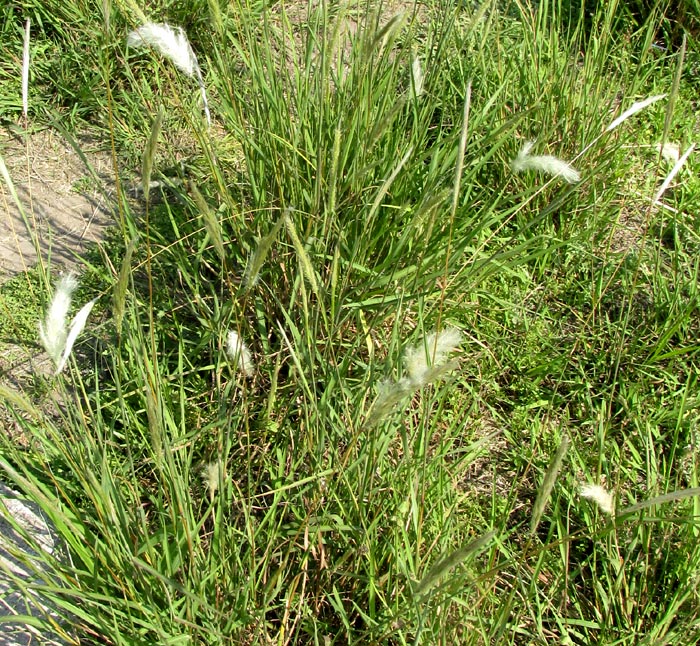
In the previous entry from Texas profiling Silver Beardgrass, the plants already had dispersed most of their white-"parachuted," caryopsis-type fruits. Nowadays here in the arid, central Mexican uplands during the driest part of the end of the dry season -- but next to an irrigated alfalfa field -- Silver Beardgrass is spectacularly fuzzy white-topped, as seen above. Below, the dazzling brilliance of the fruiting heads in sunshine is better seen:
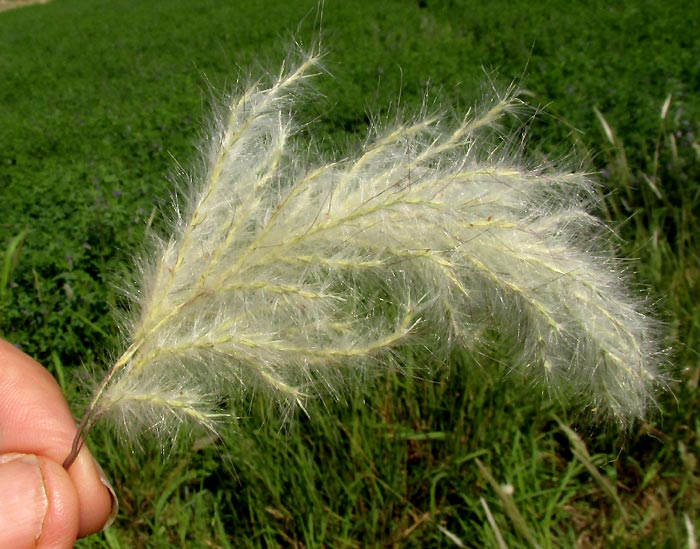
Just to be sure it really was the same Silver Beardgrass as encountered in Texas, I looked close-up at the individual fruits, paying close attention to how they connected to one another, as seen below:
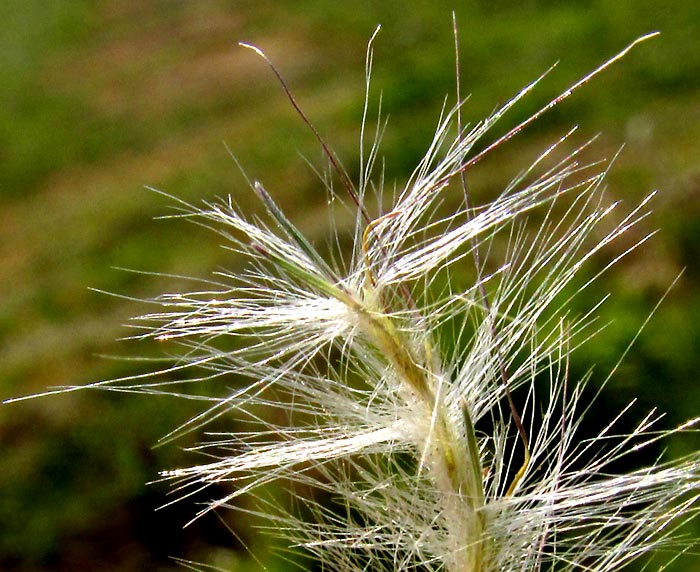
Same thing, just prettier with more fruits in bright sunlight.